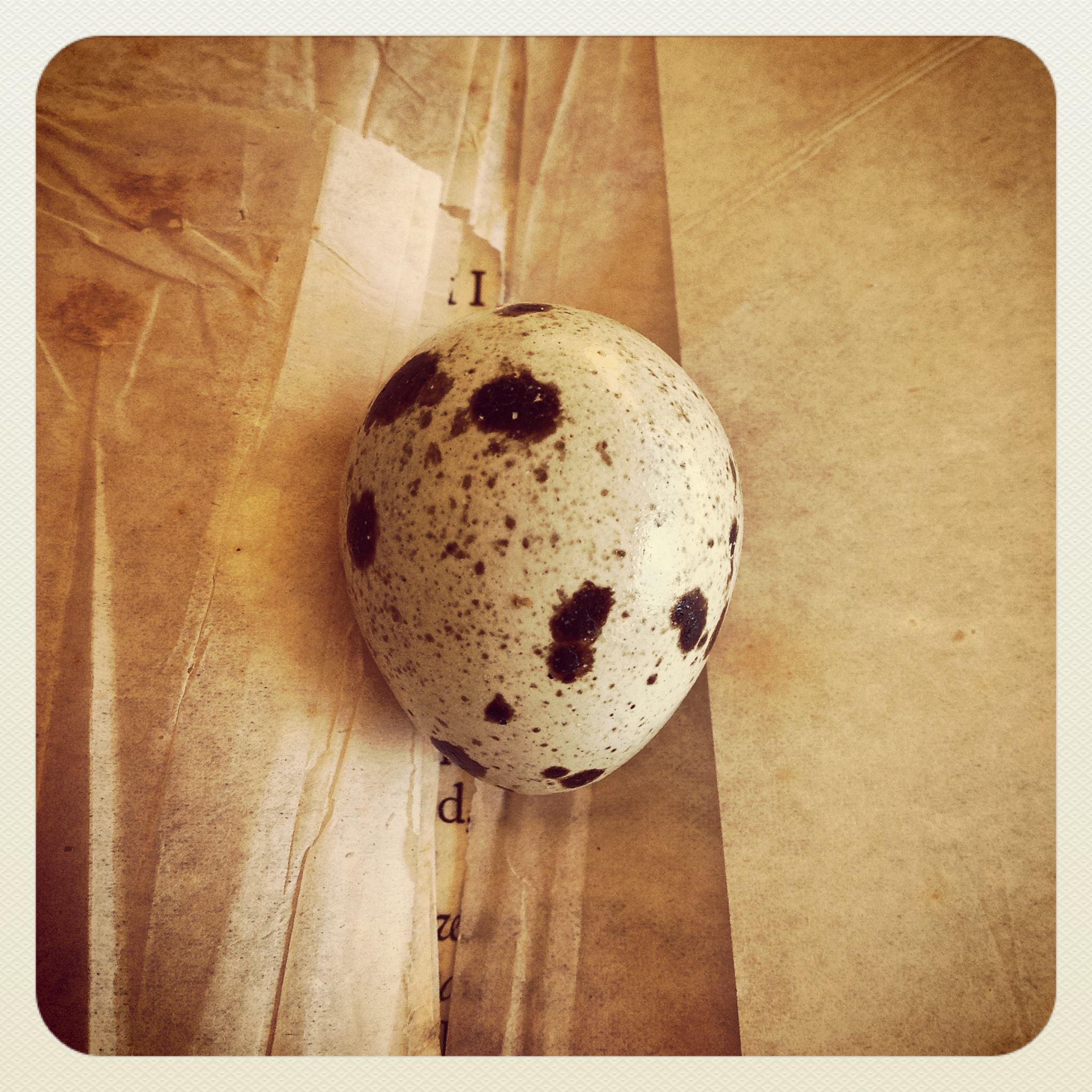Quail Eggs and Chainmail
 Berenice Rarig, visiting artist from Perth, Australia, was in Fountain Square buying a fun hat at Indy Swank when her friend, who was saving a table at La Margarita, rushed in to find her. “The people at the table next to us are talking about the amazing show they saw at the Harrison Center last night . . . all those bones!” Berenice wasn’t recognized as she tucked herself into the neighboring table and listened to what they were saying. It was just what she always hopes for . . . the chance to see her work take on a life of its own.
Berenice Rarig, visiting artist from Perth, Australia, was in Fountain Square buying a fun hat at Indy Swank when her friend, who was saving a table at La Margarita, rushed in to find her. “The people at the table next to us are talking about the amazing show they saw at the Harrison Center last night . . . all those bones!” Berenice wasn’t recognized as she tucked herself into the neighboring table and listened to what they were saying. It was just what she always hopes for . . . the chance to see her work take on a life of its own.
Berenice, considers it a great privilege to be an artist, always seeing “behind and underneath.” Her work begins with being “besotted with an object,” getting to know a material and letting it speak to her. She believes that every material has a story, a history, something to say and to teach. She collects . . . all kinds of things . . . sometimes for years before she even knows why she is gathering them. And then something sparks, the meaning shifts, and the work is born.
The 60,000 chicken wishbones have been a highlight of this show, but some of the smaller pieces are the ones that have gotten under my skin. Two are works made with quail eggs, which Berenice fell in love with when a little friend of her youngest daughter showed up at her house with a tiny one grasped in her hand. “In my excitement,” she says, “I grabbed her palm and demanded, ‘What is it?’ and typically, ‘How many more do you have?’” And they never saw that little friend again! Berenice began scouring her local Asian markets for more. As she began gathering a community of eggs, she began to notice some things about them. They were all the same, but different. When they were gathered together, they tended to break each other. And after awhile they began to smell awful. They began to remind her of us . . . of humans. Her video piece, Elision Field, is a series of portraits of 793 quail eggs. It calls on the viewer to “trust that there is something worth knowing in the other . . . to see the similarities and not the differences, the spots that unite rather than the spots that divide. But in reality it serves as a memorial to all those we have excluded.”
Exclusion. Why do we sometimes find it so difficult just to even look at each other? To look at each other and really see. Berenice, a profound introvert, used to hide behind her long hair. Until she realized that hiding herself kept her from looking at anyone else. She began to see that “loving the world and my neighbor starts with raising my head and looking them in the face. So I cut my bangs. I began to collect my hair brushings. I wove the offending pile of hair into European 4 to 1 chainmail and called it Locks. I still want it to armor me but it will not. It is no longer attached to my head.” The piece is mounted on a mirror, so that as I look at it, I see the armor covering me, and have to question what I am hiding behind, who I want to protect myself from, and who I am choosing not to look at and really see.
Contents May Have Shifted has been called “entrancing,” “disturbing,” “asking the right questions,” something “I’m not sure I could see again,” and “really quite beautiful. The show of the month if not quarter or year.” It is a powerful collection of installations, exhibited together, here in the United States, for the first time. The show hangs through Friday, April 26. If you have not yet seen it, please come in this week. We’d love to see you . . . and to really see you.
